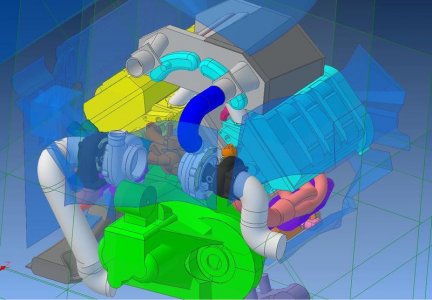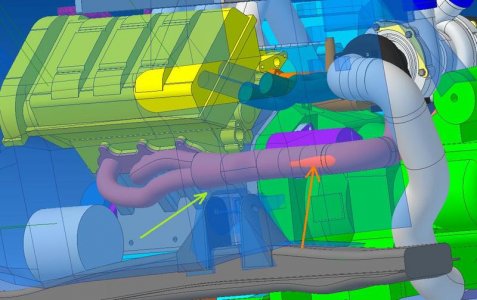This was one configuration I had considered in the past since it would be so easy to do and a much more optimal configuration than anything else out there. However, the front bank turbo will require the exhaust to pass right where the front engine mount is... and there is not enough room even for small 1-3/4" piping. Hence my question on rigid engine mounts in this thread so I could re-engineer the front mount to provide the required clearance:
http://www.nsxprime.com/forum/showthread.php/156353-Anyone-Have-Rigid-Engine-Mounts?highlight=solid+engine+mounts
Right now, the way I am leaning for my custom twin turbo setup is to have my friend at Hogan make me custom IM's - one for each bank and each with their own TB. The front bank turbo will have the hot piping cross over to where the OEM fuel filter is. This may necessitate moving the engine bay brace where the fuel pump resistor mounts on depending on turbo frame size. I've already deleted the resistor, and have also plumbed my fuel supply and return lines where the coolant pipes go, so fuel vapor lock is not a concern. I don't want a full cage yet, but I will strengthen the weakened area with a roll bar tying back to the rear if/when I eventually do this.
The rear bank turbo will sit on top of the transmission. I can get BW EFR turbos for a good deal, so will probably go with those and monitor the turbine speed. That, combined with individual EGT's and O2 bank readings should provide enough information to tune everything well. No IC's - just 30/70 meth/water injection and a 5-gallon baffled tank in the trunk when I need it.
I'm curious on your thoughts and ideas how to work around the front engine mount being in the way. If this can be relocated with a different support, then I'd prefer the pictured configuration above too.
Dave









